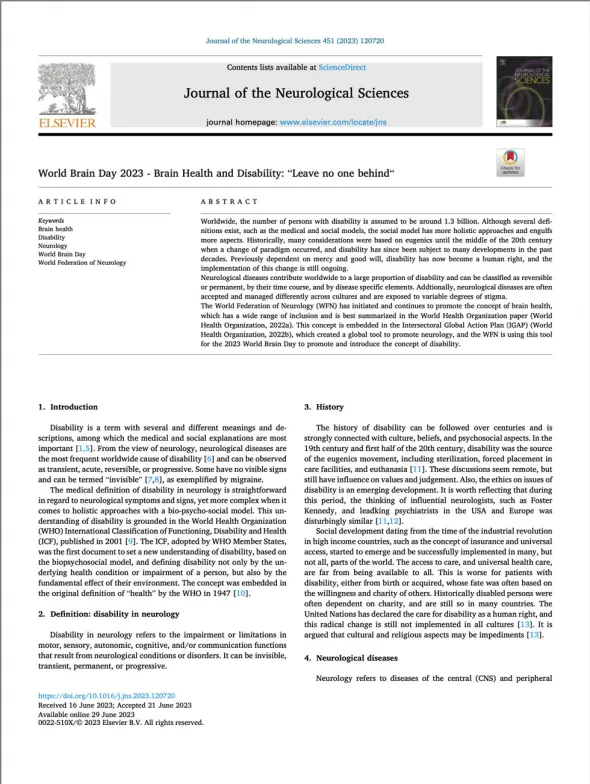World Brain Day 2023 - Brain Health and Disability: “Leave no one behind“
9 Jul 2023
Tissa Wijeratne, David W. Dodick, Steven L. Lewis, Alla Guekht, Ksenia Pochigaeva, Wolfgang Grisold
JNS EDITORIAL| VOLUME 451, 120720, AUGUST 15, 2023
 Worldwide, the number of persons with disability is assumed to be around 1.3 billion. Although several definitions exist, such as the medical and social models, the social model has more holistic approaches and engulfs more aspects. Historically, many considerations were based on eugenics until the middle of the 20th century when a change of paradigm occurred, and disability has since been subject to many developments in the past decades. Previously dependent on mercy and good will, disability has now become a human right, and the implementation of this change is still ongoing.
Worldwide, the number of persons with disability is assumed to be around 1.3 billion. Although several definitions exist, such as the medical and social models, the social model has more holistic approaches and engulfs more aspects. Historically, many considerations were based on eugenics until the middle of the 20th century when a change of paradigm occurred, and disability has since been subject to many developments in the past decades. Previously dependent on mercy and good will, disability has now become a human right, and the implementation of this change is still ongoing.
Neurological diseases contribute worldwide to a large proportion of disability and can be classified as reversible or permanent, by their time course, and by disease specific elements. Addtionally, neurological diseases are often accepted and managed differently across cultures and are exposed to variable degrees of stigma.
The World Federation of Neurology (WFN) has initiated and continues to promote the concept of brain health, which has a wide range of inclusion and is best summarized in the World Health Organization paper (World Health Organization, 2022a). This concept is embedded in the Intersectoral Global Action Plan (IGAP) (World Health Organization, 2022b), which created a global tool to promote neurology, and the WFN is using this tool for the 2023 World Brain Day to promote and introduce the concept of disability.
Web design by Tribal Systems







